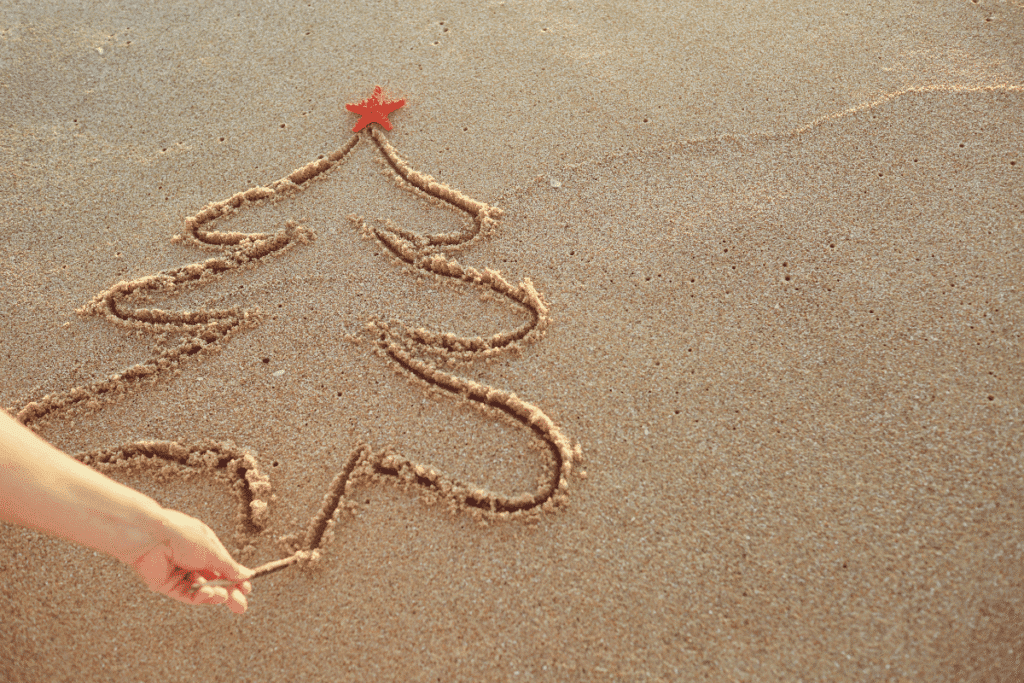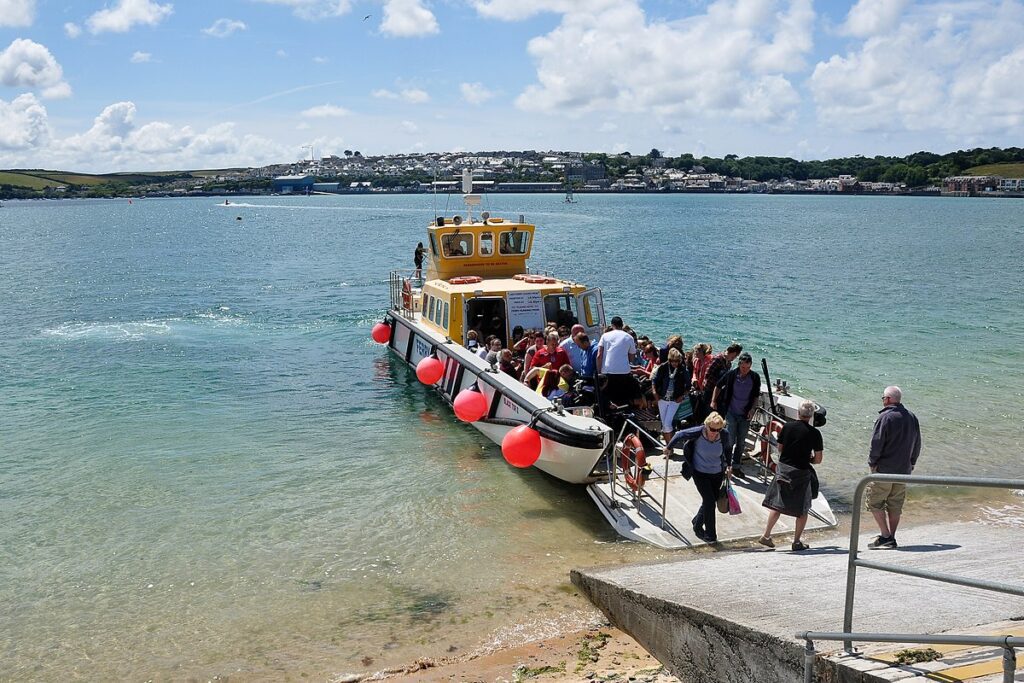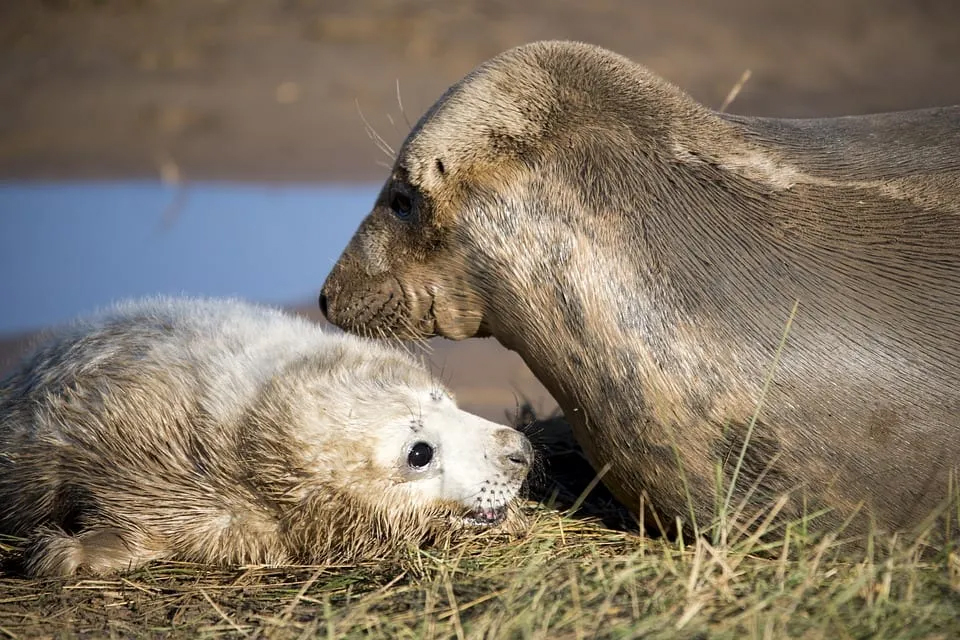Why Spring is the Perfect Time for Cornwall Wildlife Spotting
Spring in Cornwall offers some of the most exciting opportunities to connect with nature. As the days grow longer and nature bursts into life, Cornwall is the perfect location for wildlife spotting in Spring.
Spring is the time when Atlantic puffins return to their coastal nesting sites, creating perfect spotting opportunities with their colourful beaks and charming personalities. Migratory birds make Cornwall their temporary home during springtime, with swallows, warblers, and sandpipers gracing our coastlines and estuaries.
The Cornish landscape transforms with vibrant wildflowers, creating a colourful backdrop that attracts bees, butterflies, and other pollinators. Even our shyer land creatures like hedgehogs, rabbits, and foxes become more visible as they enjoy the milder weather.
In the sea, seals, dolphins, and occasionally even basking sharks move closer to shore in the warming waters of spring. The comfortable temperatures make it ideal for exploring nature reserves, cliff paths, and beaches without the summer crowds or winter chill. It’s truly the sweet spot for wildlife enthusiasts!
Marine Wildlife to Spot in Spring
Seals: Cornwall’s Coastal Celebrities
Spring offers wonderful opportunities to spot both grey seals and common (harbour) seals along our dramatic coastline. Grey seals are often seen sunbathing on rocky outcrops or playfully swimming near shore.
While less common, harbour seals might surprise you with an appearance during spring. They’re a bit shyer than their grey cousins, but keep your eyes peeled for them swimming in shallower waters or relaxing on sandy beaches.
Top Tip: Visit during low tide, when seals often haul out on exposed rocks and beaches. Watch for those big, dark eyes and rounded heads peeking above the water’s surface!
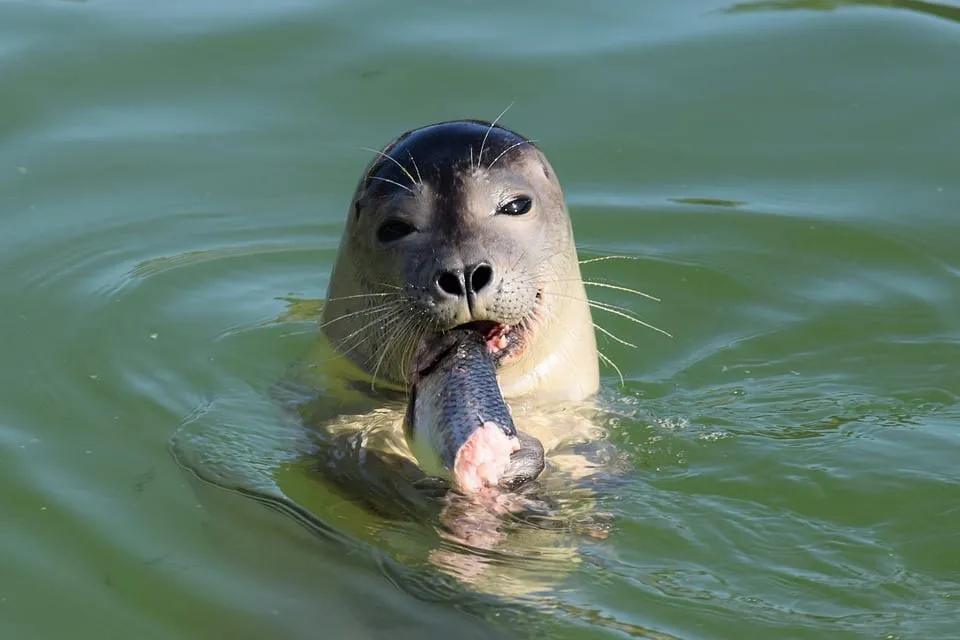
Dolphins: Playful Sightings in the Spring Sunshine
Spring brings three delightful dolphin species to our shores: bottlenose, common, and the more elusive Risso’s dolphins. As the waters warm, these intelligent creatures become increasingly active and visible.
- Despite their name, common dolphins are anything but ordinary. They’re actually our most frequently spotted dolphin species in Cornwall. Look for their energetic pods (often around 20 individuals) showing off with acrobatic leaps and synchronised swimming.
- Bottlenose dolphins bring their playful charm too, often seen leaping from the water or riding the bow waves of boats. Did you know there are two different bottlenose ecotypes? The coastal and offshore varieties each stick to their preferred waters.
- Risso’s dolphins might make a special appearance as they follow tasty cuttlefish closer to shore. These distinctive dolphins are easy to identify by their white scarring on grey bodies – battle marks from their social interactions.
Porpoises: The Shy Cetaceans
Harbour porpoises might be small and shy, but spring’s calmer sea conditions make this the perfect time to spot these elusive cetaceans. Unlike their showy dolphin cousins, porpoises prefer a more subtle approach to life. You’ll typically see them alone or in small groups, their triangular dorsal fins briefly breaking the surface as they swim calmly through the water.
Remember that porpoises are sensitive to noise and disturbance, so enjoy these special sightings from a respectful distance.
Seasonal Seabirds
Spring welcomes a wonderful variety of seabirds returning to Cornwall for the breeding season.
- Atlantic Puffins steal the spotlight from March to early July. These charismatic birds are unmistakable with their orange bills, black and white “tuxedo” plumage, and colourful legs. Watch for them nesting in burrows on cliffs and offshore islands, or carrying fish in their beaks to feed their young “pufflings.”
- Guillemots arrive on our coastal cliffs in early March, sporting their distinctive black and white plumage and sharp bills. April and May offer especially rewarding viewing as they engage in courtship displays and nesting activities.
- Razorbills complete our seabird trio with their thick, black bills and formal “tuxedo” appearance. Spring visitors might catch them nesting in rocky crevices or diving impressively into the sea to catch sand eels and herring.
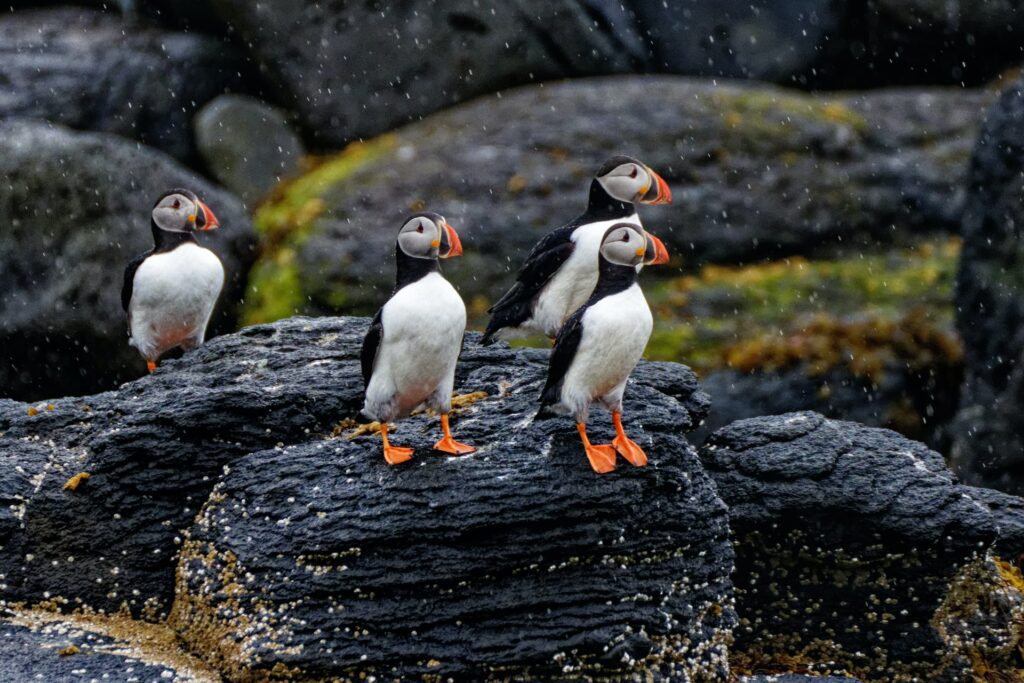
Hidden Gems: Lesser-Known Marine Creatures
As spring progresses, fascinating jellyfish begin to appear in our warm spring waters. The impressive barrel jellyfish is particularly noteworthy – these gentle giants spend winter in deep water before moving to shallower areas in spring to breed.
Spider crabs become more active as the water warms, with large migrations occurring in early spring as they move into shallower waters to spawn. Female crabs become egg-bearing from April onward, adding another dimension to your wildlife-spotting adventure.
Land and Coastal Wildlife Highlights
Wildflowers and Coastal Vegetation
April and May transform Cornwall’s landscape in spring with blooming wildflowers, creating a stunning palette of colours across our coastal areas. The South West Coast Path offers the perfect way to experience this botanical showcase. Stretching over 630 miles, this famous trail treats you to ever-changing displays – from cliff-edge blossoms to coastal heathland and grassy meadows.
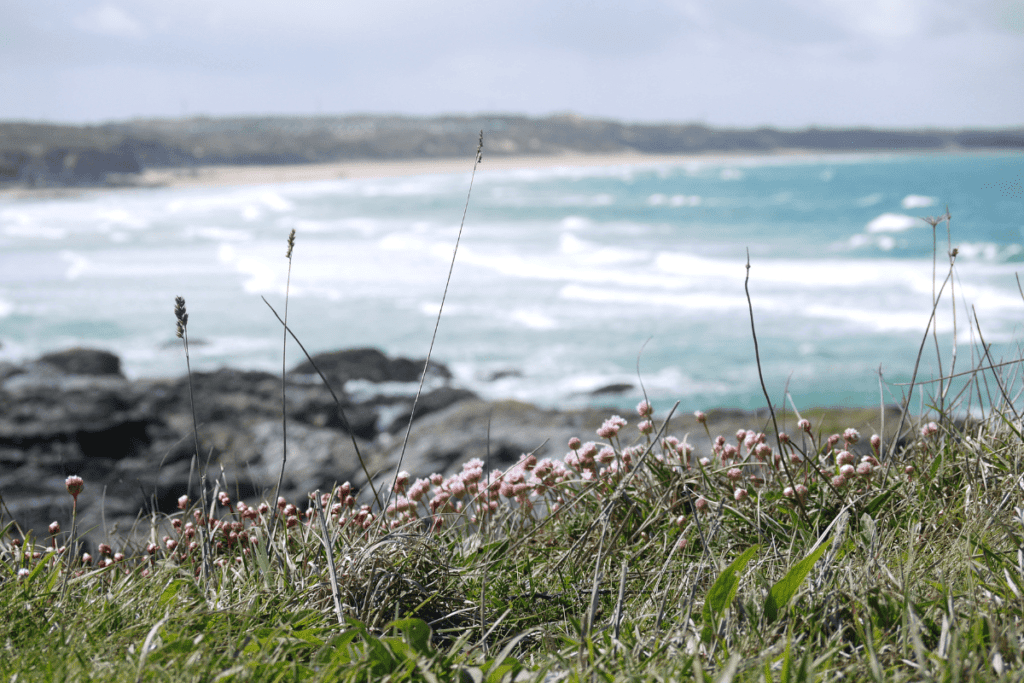
Rockpool Discoveries for All Ages
Cornwall’s rockpools are like natural aquariums, perfect for wildlife enthusiasts of all ages. The changing tides reveal fascinating miniature ecosystems teeming with life.
Keep your eyes peeled for scuttling shore crabs and darting gobies hiding under rocks and seaweed. Common limpets with their cone-shaped shells cling tightly to rocks, while beadlet anemones transform from simple red blobs when dry to tentacled hunters when submerged.
Exploring rockpools offers a wonderful hands-on wildlife experience that children particularly love – it’s nature’s own treasure hunt!
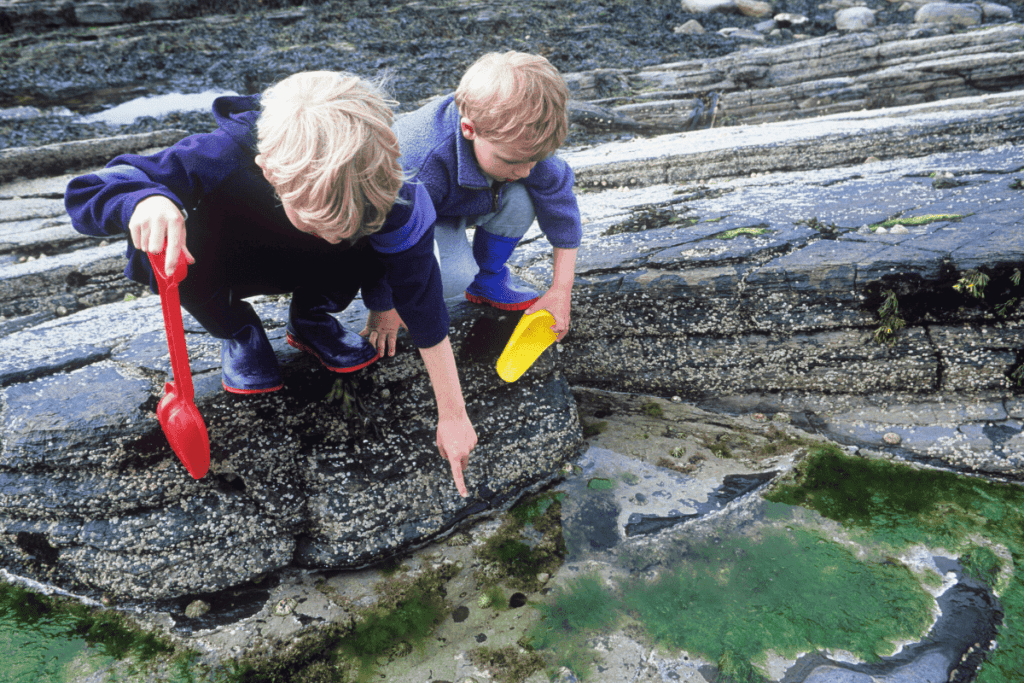
Best Practices for Responsible Wildlife Spotting
Having an amazing wildlife experience also means being a responsible visitor. Here’s how you can enjoy Cornwall’s natural wonders while ensuring they thrive for future generations:
- Keep it peaceful: Speak softly and avoid sudden movements that might startle wildlife.
- Know before you go: Check local guidelines for the specific area and species you’re visiting.
- Keep your distance: Stay at least 100 metres away from seals and seabirds.
- Hands off: Never touch or handle wildlife – this can cause stress, injury, or disease.
- Stick to paths: Stay on marked trails to protect sensitive vegetation and nesting areas.
- Leave no trace: Take all rubbish home and avoid disturbing the natural environment.
A Spring Adventure to Remember
Cornwall’s coastline offers incredible opportunities to connect with marine life during spring. Whether you’re exploring from our beautiful coastal paths or joining us on an exciting boat trip, this season delivers magical wildlife moments that will stay with you long after your visit.
Frequently Asked Questions
What marine species can I spot around Cornwall during spring?
You might see seals (both grey and common), dolphins, porpoises, occasional basking sharks, and a variety of seabirds!
Is spring a good time to search for wildlife around Cornwall?
Many migratory species return and local wildlife becomes more active making spring a brilliant time for wildlife spotting. For larger species like minke and fin whales, summer months typically offer more frequent sightings.
Where are some of the best marine wildlife watching locations in Cornwall?
Padstow Bay and its surroundings are our personal favourite (of course!), but The Lizard Peninsula, St Ives Bay, and Falmouth Bay also offer excellent wildlife spotting opportunities.
Can I spot dolphins and seals from the shore in Cornwall?
Absolutely! Many coastal areas provide great vantage points. Look for dolphins leaping from the water and seals basking on rocks or feeding near the shoreline.
What are the best conditions for spotting marine wildlife?
Calm, clear days provide ideal visibility. Early mornings often offer rewarding sightings, though many species can be spotted throughout the day. Windy or stormy conditions may drive animals further offshore.
What should I bring when wildlife watching in Cornwall?
Pack binoculars for respectful distance viewing, a camera to capture memories, and appropriate layered clothing with waterproofs and sturdy footwear. For boat trips, don’t forget sunglasses, sunscreen, and a hat to protect yourself from the elements!
